 Boy, this sounds like a scary newsletter. The title literally says fat poisoning. From what I have been researching, it is very scary and very common. When I say common, I mean two-thirds of us probably have this. This nastiness is one of the underlying causes of obesity, heart disease, and diabetes. This is about what happens inside our cells when we eat too much fat, both saturated fat and polyunsaturated fats. How much is too much? Well, how many of us are overweight? The amount of fat most of us eat is too much. If you are measuring the fat in terms of the percentage of our daily calories, some sources will say 30% of our daily calories is the upper limit to consume as fat. If we look at just the saturated fat portion that number drops down to a max of 10%. Increasing saturated fat to only 12% (or more) spikes the damage up to its maximum level. Our body has very little response to levels of saturated fat below 10%, but then gets very upset when we go even a tiny bit above that level.
Boy, this sounds like a scary newsletter. The title literally says fat poisoning. From what I have been researching, it is very scary and very common. When I say common, I mean two-thirds of us probably have this. This nastiness is one of the underlying causes of obesity, heart disease, and diabetes. This is about what happens inside our cells when we eat too much fat, both saturated fat and polyunsaturated fats. How much is too much? Well, how many of us are overweight? The amount of fat most of us eat is too much. If you are measuring the fat in terms of the percentage of our daily calories, some sources will say 30% of our daily calories is the upper limit to consume as fat. If we look at just the saturated fat portion that number drops down to a max of 10%. Increasing saturated fat to only 12% (or more) spikes the damage up to its maximum level. Our body has very little response to levels of saturated fat below 10%, but then gets very upset when we go even a tiny bit above that level.
 Three weeks ago I wrote about the delicate balance between fats and carbs in the body. Since that time I have continued to research this impact on deeper and deeper levels. This is where I came across this whole idea of lipotoxicity. Apparently, this has been a hot topic of research for several years now. It presents another layer to the subject I wrote about three weeks ago concerning how each cell can only process either sugar or fat, not both when either is in abundance. This newer research is showing us that excess fat gets converted into a couple of intermediate molecules (ceramide and diacylglycerol) which build up inside the individual cells just like fat does inside our bodies. As it builds up, it turns off the ability of the cell to respond to insulin making it and our insulin resistant. It is this state of insulin resistance that underlies diabetes, heart disease, and obesity. To make matters worse, this stuff gradually destroys the mitochondria powerhouses inside our cells leaving each cell with less and less energy.
Three weeks ago I wrote about the delicate balance between fats and carbs in the body. Since that time I have continued to research this impact on deeper and deeper levels. This is where I came across this whole idea of lipotoxicity. Apparently, this has been a hot topic of research for several years now. It presents another layer to the subject I wrote about three weeks ago concerning how each cell can only process either sugar or fat, not both when either is in abundance. This newer research is showing us that excess fat gets converted into a couple of intermediate molecules (ceramide and diacylglycerol) which build up inside the individual cells just like fat does inside our bodies. As it builds up, it turns off the ability of the cell to respond to insulin making it and our insulin resistant. It is this state of insulin resistance that underlies diabetes, heart disease, and obesity. To make matters worse, this stuff gradually destroys the mitochondria powerhouses inside our cells leaving each cell with less and less energy.
 That last piece of information is where the term lipotoxicity comes from. Too much fat accumulates inside cells and gradually poisons the cell energy mechanisms. This is where the disease aspect comes from. The old understanding called the Randle cycle didn’t account for the toxic impact of too much fat. It simply explained one cause of insulin resistance.
That last piece of information is where the term lipotoxicity comes from. Too much fat accumulates inside cells and gradually poisons the cell energy mechanisms. This is where the disease aspect comes from. The old understanding called the Randle cycle didn’t account for the toxic impact of too much fat. It simply explained one cause of insulin resistance.
 One of the pieces to this puzzle I was particularly interested in was why it was that, if this is true, traditional southern Asian cultures that subsist on massive amounts of coconut oil do not show this trend of high amounts of heart disease, diabetes, and obesity. By all accounts from this research, they should be almost extinct by now – all dead from massive heart attacks. As always the devil is in the details. Looking deeper, I find that only specific kinds of oil are a problem. Every oil is a mixture of various kinds of fatty acids, and it is only a few of these fatty acids that cause this lipotoxicity concern. One of the worst is the saturated fat palmitic acid via the ceramide pathway. Its concentration is highest in palm kernel oil (40%) and is largely found in animal fats, dairy, chicken, lard, cottonseed, and cocoa butter at around 25%. Coconut oil is only 9% palmitic acid, which is why southern Asians don’t have high heart attack issues. The other fatty acids that cause problems are the omega-6 fats found in vegetable oils via the diacylglycerol pathway. Conversely, monosaturated fats like olive and avocado oils and omega-3 fats like fish actually help reverse these concerns.
One of the pieces to this puzzle I was particularly interested in was why it was that, if this is true, traditional southern Asian cultures that subsist on massive amounts of coconut oil do not show this trend of high amounts of heart disease, diabetes, and obesity. By all accounts from this research, they should be almost extinct by now – all dead from massive heart attacks. As always the devil is in the details. Looking deeper, I find that only specific kinds of oil are a problem. Every oil is a mixture of various kinds of fatty acids, and it is only a few of these fatty acids that cause this lipotoxicity concern. One of the worst is the saturated fat palmitic acid via the ceramide pathway. Its concentration is highest in palm kernel oil (40%) and is largely found in animal fats, dairy, chicken, lard, cottonseed, and cocoa butter at around 25%. Coconut oil is only 9% palmitic acid, which is why southern Asians don’t have high heart attack issues. The other fatty acids that cause problems are the omega-6 fats found in vegetable oils via the diacylglycerol pathway. Conversely, monosaturated fats like olive and avocado oils and omega-3 fats like fish actually help reverse these concerns.
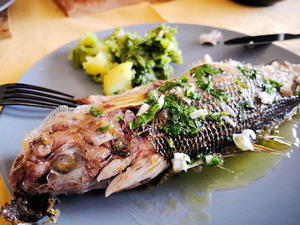 It is interesting to note that areas of the world where people live longer and have lower heart issues, obesity, and diabetes are found to eat more fish (omega-3 oils) and monosaturated fats (olive oil). Traditionally through history most of the fat humans consumed came from olives and fish. You might say “Hey, what about hunter-gatherers?” But if you actually examine the amount of fat in wild game, you will find very little fat to eat. Fatty steaks are a product of raising meat animals in feed lots on lots of grain – a very new invention. All that tasty marbling of fat in the muscles is a sign of chronic inflammation. That fat should not be there in a healthy animal (or a healthy human for that matter.) In people, I look for fatty marbling in muscles in MRI studies. When I see that, I know we have fatty degeneration of the muscles and the muscles are atrophied and weak. Sorry, the choice grade of meat is the most diseased meat.
It is interesting to note that areas of the world where people live longer and have lower heart issues, obesity, and diabetes are found to eat more fish (omega-3 oils) and monosaturated fats (olive oil). Traditionally through history most of the fat humans consumed came from olives and fish. You might say “Hey, what about hunter-gatherers?” But if you actually examine the amount of fat in wild game, you will find very little fat to eat. Fatty steaks are a product of raising meat animals in feed lots on lots of grain – a very new invention. All that tasty marbling of fat in the muscles is a sign of chronic inflammation. That fat should not be there in a healthy animal (or a healthy human for that matter.) In people, I look for fatty marbling in muscles in MRI studies. When I see that, I know we have fatty degeneration of the muscles and the muscles are atrophied and weak. Sorry, the choice grade of meat is the most diseased meat.
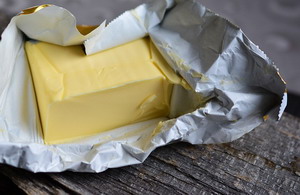 The second detail that must be considered seems to be avoided by most of the studies I have found. Lipotoxicity is caused by eating too much fat. All the fats consumed in their healthy amounts are good for you and necessary for the running of the body. It only becomes toxic when we eat too much of it. For saturated fat that amounts to two pats of butter a day. For vegetable oil that means 5 teaspoons a day. One large plain doughnut pretty much covers your total fat allowance for a day. A single cheeseburger and you are over the top for the day. The really hard part is how much fat hides in just about everything. Plain oatmeal is 14% fat, as is wheat. There are very few foods except fruit, some vegetables, and a couple of grains (rice and millet) that are low enough in fat to not be too much fat in our diet.
The second detail that must be considered seems to be avoided by most of the studies I have found. Lipotoxicity is caused by eating too much fat. All the fats consumed in their healthy amounts are good for you and necessary for the running of the body. It only becomes toxic when we eat too much of it. For saturated fat that amounts to two pats of butter a day. For vegetable oil that means 5 teaspoons a day. One large plain doughnut pretty much covers your total fat allowance for a day. A single cheeseburger and you are over the top for the day. The really hard part is how much fat hides in just about everything. Plain oatmeal is 14% fat, as is wheat. There are very few foods except fruit, some vegetables, and a couple of grains (rice and millet) that are low enough in fat to not be too much fat in our diet.
 Throughout most of human history, we did not have food abundance. We had scarcity. The modern degenerative diseases we have been talking about are in part a direct result of having the opportunity of eating more than we need to survive. Calorie-wise we may actually be eating fewer calories than we did 100 years ago, but we also don’t burn the calories we do eat because our lives have become much easier. There are many charts showing the rise of these degenerative diseases over the last 100 years and these charts match the rise in our consumption of both vegetable oils and sugar. Different experts will argue as to which has made the worst impact — sugar or oils. But from what I am seeing, it is really the combination of both that is doing us in. I have written other articles on the dangers of sugar. Today is on the dangers of too much fat. A little fat is okay, even healthy. The problem is too much fat, too often.
Throughout most of human history, we did not have food abundance. We had scarcity. The modern degenerative diseases we have been talking about are in part a direct result of having the opportunity of eating more than we need to survive. Calorie-wise we may actually be eating fewer calories than we did 100 years ago, but we also don’t burn the calories we do eat because our lives have become much easier. There are many charts showing the rise of these degenerative diseases over the last 100 years and these charts match the rise in our consumption of both vegetable oils and sugar. Different experts will argue as to which has made the worst impact — sugar or oils. But from what I am seeing, it is really the combination of both that is doing us in. I have written other articles on the dangers of sugar. Today is on the dangers of too much fat. A little fat is okay, even healthy. The problem is too much fat, too often.
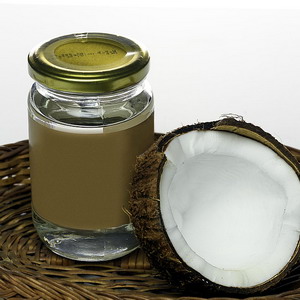 Time for a ray of sunshine in this story. So far from what I have been able to find, MCT oil does not enter into this toxicity problem. I searched and searched and found very little on this subject. That tells me that no one has bothered to really test this subject. But from what little I did find, it looks like MCTs are okay. Most studies say monosaturated oils like olive and avocado actually help this toxicity problem. I did find one article including oleic acid as a problem, which is olive oil. But other articles say olive is helpful. Many point out the polyphenol component of olive oil as a heart-protective element.
Time for a ray of sunshine in this story. So far from what I have been able to find, MCT oil does not enter into this toxicity problem. I searched and searched and found very little on this subject. That tells me that no one has bothered to really test this subject. But from what little I did find, it looks like MCTs are okay. Most studies say monosaturated oils like olive and avocado actually help this toxicity problem. I did find one article including oleic acid as a problem, which is olive oil. But other articles say olive is helpful. Many point out the polyphenol component of olive oil as a heart-protective element.
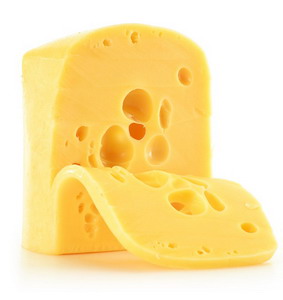 My personal goal was to tackle my own insulin resistance. My levels are not bad, but they are not good either. I would like to bring my levels down to a fasting insulin of 5 or below. This research has shown me that this will take a while. Even if I eat no fat at all, my body will be pulling out fat from my body stores. Unfortunately, my body stores are full of the palmitic acid I have been eating for the last 15 years in the form of butter and cheese in my diet. Until I deplete all that stored saturated fat, my cells will probably still register as insulin-resistant. I have vigorously avoided vegetable oil for the last 15 years so that should not be hiding in storage, but the years of delicious butter and dairy are hiding in there.
My personal goal was to tackle my own insulin resistance. My levels are not bad, but they are not good either. I would like to bring my levels down to a fasting insulin of 5 or below. This research has shown me that this will take a while. Even if I eat no fat at all, my body will be pulling out fat from my body stores. Unfortunately, my body stores are full of the palmitic acid I have been eating for the last 15 years in the form of butter and cheese in my diet. Until I deplete all that stored saturated fat, my cells will probably still register as insulin-resistant. I have vigorously avoided vegetable oil for the last 15 years so that should not be hiding in storage, but the years of delicious butter and dairy are hiding in there.
 To summarize, avoid eating too much fat. You can get away with too much fat for a while if you are on a keto diet and avoiding carbs, but lipotoxicity will still be building up over time. You will see this in your blood sugar being higher than it should be, particularly since you are not eating any sugar. Some fat is okay. Keep your saturated (generally animal) fat intake to less than 10% of your calories and your polyunsaturated (most seed oils) fat intake also to less than 10%. This will take a couple of weeks of looking at labels and adding up totals over the day to keep the totals under around 22 grams of each fat over the course of the day. Why do this? Do this to undo the metabolic basis behind diabetes, heart disease, and obesity. This is a challenge, so give yourself lots of time to learn to modify your eating habits.
To summarize, avoid eating too much fat. You can get away with too much fat for a while if you are on a keto diet and avoiding carbs, but lipotoxicity will still be building up over time. You will see this in your blood sugar being higher than it should be, particularly since you are not eating any sugar. Some fat is okay. Keep your saturated (generally animal) fat intake to less than 10% of your calories and your polyunsaturated (most seed oils) fat intake also to less than 10%. This will take a couple of weeks of looking at labels and adding up totals over the day to keep the totals under around 22 grams of each fat over the course of the day. Why do this? Do this to undo the metabolic basis behind diabetes, heart disease, and obesity. This is a challenge, so give yourself lots of time to learn to modify your eating habits.
Take care,
David
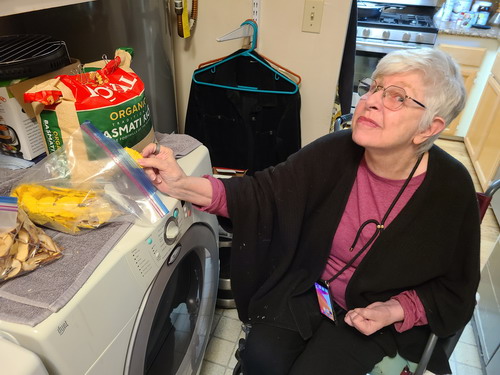 Ellen
Ellen
Woops! I looks like I caught Ellen sneaking some of the dried fruit I have been making lately. I finally harvested the pears off my pear tree, and I have been slowly drying them in my food dehydrator. One thing lead to another and I ended up drying a couple pineapples, a melon, and a bunch of bananas. Ellen has decided that the dried tropical fruit is just fine. I looks like I am going to have to get another couple pineapples and a melon to keep up with her.
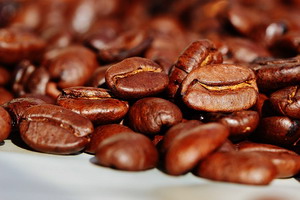 Substance in coffee fights cognitive decline
Substance in coffee fights cognitive decline
 Loneliness associated with Parkinson’s
Loneliness associated with Parkinson’s
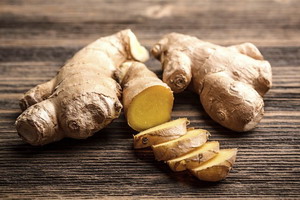 Ginger may help fight autoimmune disease
Ginger may help fight autoimmune disease

 Boy, this sounds like a scary newsletter. The title literally says fat poisoning. From what I have been researching, it is very scary and very common. When I say common, I mean two-thirds of us probably have this. This nastiness is one of the underlying causes of obesity, heart disease, and diabetes. This is about what happens inside our cells when we eat too much fat, both saturated fat and polyunsaturated fats. How much is too much? Well, how many of us are overweight? The amount of fat most of us eat is too much. If you are measuring the fat in terms of the percentage of our daily calories, some sources will say 30% of our daily calories is the upper limit to consume as fat. If we look at just the saturated fat portion that number drops down to a max of 10%. Increasing saturated fat to only 12% (or more) spikes the damage up to its maximum level. Our body has very little response to levels of saturated fat below 10%, but then gets very upset when we go even a tiny bit above that level.
Boy, this sounds like a scary newsletter. The title literally says fat poisoning. From what I have been researching, it is very scary and very common. When I say common, I mean two-thirds of us probably have this. This nastiness is one of the underlying causes of obesity, heart disease, and diabetes. This is about what happens inside our cells when we eat too much fat, both saturated fat and polyunsaturated fats. How much is too much? Well, how many of us are overweight? The amount of fat most of us eat is too much. If you are measuring the fat in terms of the percentage of our daily calories, some sources will say 30% of our daily calories is the upper limit to consume as fat. If we look at just the saturated fat portion that number drops down to a max of 10%. Increasing saturated fat to only 12% (or more) spikes the damage up to its maximum level. Our body has very little response to levels of saturated fat below 10%, but then gets very upset when we go even a tiny bit above that level. Three weeks ago I wrote about the delicate balance between fats and carbs in the body. Since that time I have continued to research this impact on deeper and deeper levels. This is where I came across this whole idea of lipotoxicity. Apparently, this has been a hot topic of research for several years now. It presents another layer to the subject I wrote about three weeks ago concerning how each cell can only process either sugar or fat, not both when either is in abundance. This newer research is showing us that excess fat gets converted into a couple of intermediate molecules (ceramide and diacylglycerol) which build up inside the individual cells just like fat does inside our bodies. As it builds up, it turns off the ability of the cell to respond to insulin making it and our insulin resistant. It is this state of insulin resistance that underlies diabetes, heart disease, and obesity. To make matters worse, this stuff gradually destroys the mitochondria powerhouses inside our cells leaving each cell with less and less energy.
Three weeks ago I wrote about the delicate balance between fats and carbs in the body. Since that time I have continued to research this impact on deeper and deeper levels. This is where I came across this whole idea of lipotoxicity. Apparently, this has been a hot topic of research for several years now. It presents another layer to the subject I wrote about three weeks ago concerning how each cell can only process either sugar or fat, not both when either is in abundance. This newer research is showing us that excess fat gets converted into a couple of intermediate molecules (ceramide and diacylglycerol) which build up inside the individual cells just like fat does inside our bodies. As it builds up, it turns off the ability of the cell to respond to insulin making it and our insulin resistant. It is this state of insulin resistance that underlies diabetes, heart disease, and obesity. To make matters worse, this stuff gradually destroys the mitochondria powerhouses inside our cells leaving each cell with less and less energy. That last piece of information is where the term lipotoxicity comes from. Too much fat accumulates inside cells and gradually poisons the cell energy mechanisms. This is where the disease aspect comes from. The old understanding called the Randle cycle didn’t account for the toxic impact of too much fat. It simply explained one cause of insulin resistance.
That last piece of information is where the term lipotoxicity comes from. Too much fat accumulates inside cells and gradually poisons the cell energy mechanisms. This is where the disease aspect comes from. The old understanding called the Randle cycle didn’t account for the toxic impact of too much fat. It simply explained one cause of insulin resistance. One of the pieces to this puzzle I was particularly interested in was why it was that, if this is true, traditional southern Asian cultures that subsist on massive amounts of coconut oil do not show this trend of high amounts of heart disease, diabetes, and obesity. By all accounts from this research, they should be almost extinct by now – all dead from massive heart attacks. As always the devil is in the details. Looking deeper, I find that only specific kinds of oil are a problem. Every oil is a mixture of various kinds of fatty acids, and it is only a few of these fatty acids that cause this lipotoxicity concern. One of the worst is the saturated fat palmitic acid via the ceramide pathway. Its concentration is highest in palm kernel oil (40%) and is largely found in animal fats, dairy, chicken, lard, cottonseed, and cocoa butter at around 25%. Coconut oil is only 9% palmitic acid, which is why southern Asians don’t have high heart attack issues. The other fatty acids that cause problems are the omega-6 fats found in vegetable oils via the diacylglycerol pathway. Conversely, monosaturated fats like olive and avocado oils and omega-3 fats like fish actually help reverse these concerns.
One of the pieces to this puzzle I was particularly interested in was why it was that, if this is true, traditional southern Asian cultures that subsist on massive amounts of coconut oil do not show this trend of high amounts of heart disease, diabetes, and obesity. By all accounts from this research, they should be almost extinct by now – all dead from massive heart attacks. As always the devil is in the details. Looking deeper, I find that only specific kinds of oil are a problem. Every oil is a mixture of various kinds of fatty acids, and it is only a few of these fatty acids that cause this lipotoxicity concern. One of the worst is the saturated fat palmitic acid via the ceramide pathway. Its concentration is highest in palm kernel oil (40%) and is largely found in animal fats, dairy, chicken, lard, cottonseed, and cocoa butter at around 25%. Coconut oil is only 9% palmitic acid, which is why southern Asians don’t have high heart attack issues. The other fatty acids that cause problems are the omega-6 fats found in vegetable oils via the diacylglycerol pathway. Conversely, monosaturated fats like olive and avocado oils and omega-3 fats like fish actually help reverse these concerns. It is interesting to note that areas of the world where people live longer and have lower heart issues, obesity, and diabetes are found to eat more fish (omega-3 oils) and monosaturated fats (olive oil). Traditionally through history most of the fat humans consumed came from olives and fish. You might say “Hey, what about hunter-gatherers?” But if you actually examine the amount of fat in wild game, you will find very little fat to eat. Fatty steaks are a product of raising meat animals in feed lots on lots of grain – a very new invention. All that tasty marbling of fat in the muscles is a sign of chronic inflammation. That fat should not be there in a healthy animal (or a healthy human for that matter.) In people, I look for fatty marbling in muscles in MRI studies. When I see that, I know we have fatty degeneration of the muscles and the muscles are atrophied and weak. Sorry, the choice grade of meat is the most diseased meat.
It is interesting to note that areas of the world where people live longer and have lower heart issues, obesity, and diabetes are found to eat more fish (omega-3 oils) and monosaturated fats (olive oil). Traditionally through history most of the fat humans consumed came from olives and fish. You might say “Hey, what about hunter-gatherers?” But if you actually examine the amount of fat in wild game, you will find very little fat to eat. Fatty steaks are a product of raising meat animals in feed lots on lots of grain – a very new invention. All that tasty marbling of fat in the muscles is a sign of chronic inflammation. That fat should not be there in a healthy animal (or a healthy human for that matter.) In people, I look for fatty marbling in muscles in MRI studies. When I see that, I know we have fatty degeneration of the muscles and the muscles are atrophied and weak. Sorry, the choice grade of meat is the most diseased meat. The second detail that must be considered seems to be avoided by most of the studies I have found. Lipotoxicity is caused by eating too much fat. All the fats consumed in their healthy amounts are good for you and necessary for the running of the body. It only becomes toxic when we eat too much of it. For saturated fat that amounts to two pats of butter a day. For vegetable oil that means 5 teaspoons a day. One large plain doughnut pretty much covers your total fat allowance for a day. A single cheeseburger and you are over the top for the day. The really hard part is how much fat hides in just about everything. Plain oatmeal is 14% fat, as is wheat. There are very few foods except fruit, some vegetables, and a couple of grains (rice and millet) that are low enough in fat to not be too much fat in our diet.
The second detail that must be considered seems to be avoided by most of the studies I have found. Lipotoxicity is caused by eating too much fat. All the fats consumed in their healthy amounts are good for you and necessary for the running of the body. It only becomes toxic when we eat too much of it. For saturated fat that amounts to two pats of butter a day. For vegetable oil that means 5 teaspoons a day. One large plain doughnut pretty much covers your total fat allowance for a day. A single cheeseburger and you are over the top for the day. The really hard part is how much fat hides in just about everything. Plain oatmeal is 14% fat, as is wheat. There are very few foods except fruit, some vegetables, and a couple of grains (rice and millet) that are low enough in fat to not be too much fat in our diet. Throughout most of human history, we did not have food abundance. We had scarcity. The modern degenerative diseases we have been talking about are in part a direct result of having the opportunity of eating more than we need to survive. Calorie-wise we may actually be eating fewer calories than we did 100 years ago, but we also don’t burn the calories we do eat because our lives have become much easier. There are many charts showing the rise of these degenerative diseases over the last 100 years and these charts match the rise in our consumption of both vegetable oils and sugar. Different experts will argue as to which has made the worst impact — sugar or oils. But from what I am seeing, it is really the combination of both that is doing us in. I have written other articles on the dangers of sugar. Today is on the dangers of too much fat. A little fat is okay, even healthy. The problem is too much fat, too often.
Throughout most of human history, we did not have food abundance. We had scarcity. The modern degenerative diseases we have been talking about are in part a direct result of having the opportunity of eating more than we need to survive. Calorie-wise we may actually be eating fewer calories than we did 100 years ago, but we also don’t burn the calories we do eat because our lives have become much easier. There are many charts showing the rise of these degenerative diseases over the last 100 years and these charts match the rise in our consumption of both vegetable oils and sugar. Different experts will argue as to which has made the worst impact — sugar or oils. But from what I am seeing, it is really the combination of both that is doing us in. I have written other articles on the dangers of sugar. Today is on the dangers of too much fat. A little fat is okay, even healthy. The problem is too much fat, too often. Time for a ray of sunshine in this story. So far from what I have been able to find, MCT oil does not enter into this toxicity problem. I searched and searched and found very little on this subject. That tells me that no one has bothered to really test this subject. But from what little I did find, it looks like MCTs are okay. Most studies say monosaturated oils like olive and avocado actually help this toxicity problem. I did find one article including oleic acid as a problem, which is olive oil. But other articles say olive is helpful. Many point out the polyphenol component of olive oil as a heart-protective element.
Time for a ray of sunshine in this story. So far from what I have been able to find, MCT oil does not enter into this toxicity problem. I searched and searched and found very little on this subject. That tells me that no one has bothered to really test this subject. But from what little I did find, it looks like MCTs are okay. Most studies say monosaturated oils like olive and avocado actually help this toxicity problem. I did find one article including oleic acid as a problem, which is olive oil. But other articles say olive is helpful. Many point out the polyphenol component of olive oil as a heart-protective element. My personal goal was to tackle my own insulin resistance. My levels are not bad, but they are not good either. I would like to bring my levels down to a fasting insulin of 5 or below. This research has shown me that this will take a while. Even if I eat no fat at all, my body will be pulling out fat from my body stores. Unfortunately, my body stores are full of the palmitic acid I have been eating for the last 15 years in the form of butter and cheese in my diet. Until I deplete all that stored saturated fat, my cells will probably still register as insulin-resistant. I have vigorously avoided vegetable oil for the last 15 years so that should not be hiding in storage, but the years of delicious butter and dairy are hiding in there.
My personal goal was to tackle my own insulin resistance. My levels are not bad, but they are not good either. I would like to bring my levels down to a fasting insulin of 5 or below. This research has shown me that this will take a while. Even if I eat no fat at all, my body will be pulling out fat from my body stores. Unfortunately, my body stores are full of the palmitic acid I have been eating for the last 15 years in the form of butter and cheese in my diet. Until I deplete all that stored saturated fat, my cells will probably still register as insulin-resistant. I have vigorously avoided vegetable oil for the last 15 years so that should not be hiding in storage, but the years of delicious butter and dairy are hiding in there. To summarize, avoid eating too much fat. You can get away with too much fat for a while if you are on a keto diet and avoiding carbs, but lipotoxicity will still be building up over time. You will see this in your blood sugar being higher than it should be, particularly since you are not eating any sugar. Some fat is okay. Keep your saturated (generally animal) fat intake to less than 10% of your calories and your polyunsaturated (most seed oils) fat intake also to less than 10%. This will take a couple of weeks of looking at labels and adding up totals over the day to keep the totals under around 22 grams of each fat over the course of the day. Why do this? Do this to undo the metabolic basis behind diabetes, heart disease, and obesity. This is a challenge, so give yourself lots of time to learn to modify your eating habits.
To summarize, avoid eating too much fat. You can get away with too much fat for a while if you are on a keto diet and avoiding carbs, but lipotoxicity will still be building up over time. You will see this in your blood sugar being higher than it should be, particularly since you are not eating any sugar. Some fat is okay. Keep your saturated (generally animal) fat intake to less than 10% of your calories and your polyunsaturated (most seed oils) fat intake also to less than 10%. This will take a couple of weeks of looking at labels and adding up totals over the day to keep the totals under around 22 grams of each fat over the course of the day. Why do this? Do this to undo the metabolic basis behind diabetes, heart disease, and obesity. This is a challenge, so give yourself lots of time to learn to modify your eating habits. Ellen
Ellen